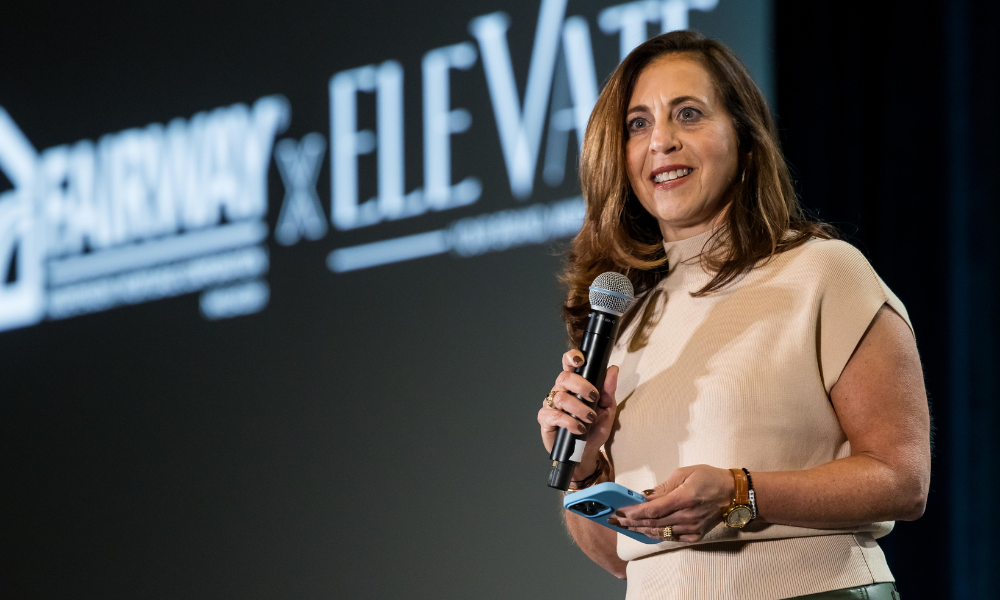Despite the transformative potential of tools like AI, there's still limitations

According to WorldMetrics, AI can automate 70% of mortgage applicant interactions, with AI-powered chatbots handling 60% of customer queries. And while there’s no denying that technology is completely changing the face of the sector, how far will new tools actually replace our loan officers?
With over 40 years in the field, Amy Slotnick (pictured), senior vice president and area manager at Fairway Independent Mortgage Corporation, is unequivocal in her belief that technology and human touch are not just complementary—they're indispensable in today’s mortgage landscape.
“Consumers who come in with a level of expectation about what the process will look like, or what mortgage options are available, rely on you to be an expert,” she explained. This shift, fueled by internet research and AI tools, places significant pressure on mortgage advisors to not only meet but exceed these expectations with precision and empathy.
Yet, despite the transformative potential of tools like AI, Slotnick is quick to highlight their limitations.
“People come sort of armed with more knowledge, but not necessarily how to use that. It’s my job to further educate them and then show them how to apply that education to what is the best mortgage product for them,” she said.
This human-centered approach extends to the nuances of the lending process. Slotnick contends that mortgages, often the largest financial transaction in a person's life, inherently demand a high degree of human intervention. “If you don’t fit in a box and you don’t have a human to help figure out where you do fit, there are a lot of people who would have gotten mortgages who now won’t,” she noted, emphasizing the industry's intrinsic complexity and the irreplaceable role of skilled advisors.
As the mortgage industry leans into technology to streamline processes, Slotnick stressed the importance of balance. While tech can facilitate efficiencies—allowing applications to be processed with minimal consumer input—it should never supplant the advisory component.
“A consumer can apply at their convenience with upfront technology systems, but then have a follow-up conversation where we’ve already had an opportunity to review their credit history, income and assets...so that we’re starting from a point where the conversation is more efficient,” she explained.
Slotnick also points out how modern tools enhance client understanding. Visual aids, like loan comparisons or rent-versus-buy analyses, resonate with today’s consumer preferences.
“Clients like to see things. They like to talk less and see more these days,” she said, reinforcing Fairway's commitment to equipping its team with cutting-edge tools.
Interestingly, Slotnick doesn’t shy away from acknowledging the mortgage industry’s evolving customer service dynamics. Because, in a competitive market, building trust and offering exceptional service are paramount.
“Customer retention is about providing them with an educational service...the most satisfying end to a phone call is, ‘I’ve talked to three other lenders, and not one person has provided me with the level of education and information that you have,’” Slotnick shared.
Slotnick’s perspective on market trends is equally insightful. She notes the increasing challenges for younger borrowers, many of whom grapple with gig economy incomes, rising housing costs, and stringent lending standards. Yet she remains optimistic about new products like down payment assistance programs and non-qualified mortgages.
“The market is starting to shift again, to open its mind to other ways than just what are the borrower’s qualifying ratios,” she added.
And Fairway’s internal culture mirrors Slotnick’s ethos, blending innovation with mentorship. Programs like Fairway Ignite foster growth among loan officers through coaching, masterminds, and peer-led discussions.
“The company is always giving and providing information and help...saying, ‘Hey, if it’s not working this way, try this way,’” she added. “It’s about creating relationships that provide value to not just our customers but to our referral partners.”



